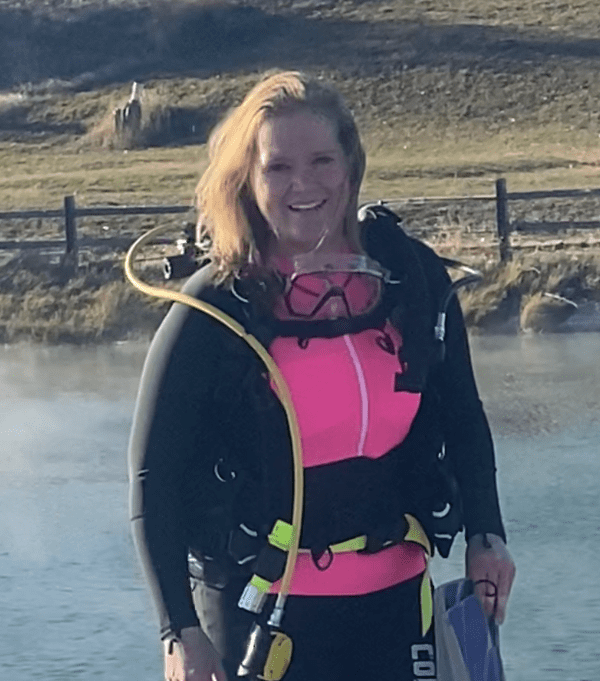
Story by Jeremiah Kalb
A leading intellectual of his time, Benjamin Franklin, once said, “For the best return on your money, pour your purse into your head.”
Business Intelligence Specialist Kaylynn Yates did this when she invested a tiny fortune in scuba gear and diving instruction in December 2021.
“I’m having a great time learning something unlike anything else I’ve experienced,” Kaylynn says.
A native of eastern Idaho, Kaylynn decided one day to devote time and energy to learning how to scuba dive in a state without direct access to an ocean, gulf, or bay.
Kaylynn’s significant other, Scott, had some students in his night welding class that pushed them over the edge to take the plunge.
“It took very little encouragement from them for us to sign up for the class,” she laughs.
“They have become great friends, and we continue to plan dives together. I’ve wanted to learn for years. Alan Brower [ER] and JoAnn Eddins [Business Ambulatory Services] have both been big inspirations to me.”
Kaylynn and Scott attended classes for six weeks at H&H Diving in Pocatello. The couple took a ten-second walk from the classroom to a 33-foot-deep pool of fish-filled freshwater, making their gap between “learning” and “doing” even easier to cross.
“Most people learn to dive so they can go somewhere tropical, but watching crayfish on the bottom of Ririe Reservoir has been surprisingly entertaining.”
A little over 45 minutes south of Rexburg, the Ririe Reservoir, built by the United States Army Corps of Engineers in 1972, was one of Kaylynn’s first lake dives of the summer.
Besides the crayfish, she’s also added sunken camp chairs, towels, and all sorts of lost things to her list of top reasons to spend time 30 feet underwater.
Buoyancy control has proven to be one of the most challenging things for Kaylynn to learn. “You want to be able to descend easily but stay suspended without landing on the bottom or hitting objects – and this depends on several fluctuating factors.”
Buoyancy control techniques such as weight, wetsuit, trim, and breath control are the key factors that help achieve neutral buoyancy. This nirvana state enables a diver to hover completely motionless, enjoying the sensation of “zero gravity.”
“It is much more challenging to figure out than I thought.”
Kaylynn also points out that diving is an activity that demands her total focus.
“Diving is a perfect collision of being really stressed but needing to breathe slowly and presently.”
Unlike her desk job, where the mere act of breathing does not cut her workday short, staying focused when underwater extends her time below. “Each breath takes the air out of my tank and brings me closer to the end of a short dive.”
There are not many, if any, mindfulness techniques that can compare to the high level of focus on breathing as scuba diving. “If I panic, I use more air.”
Feedback is immediate and compelling. The sound of Kaylynn’s regulator flowing and the burst of exhaled bubbles in the water are constant reminders for her to evaluate her breathing rate.
She can also glance at her pressure gauge and compare her consumed air to similar dives to better understand her stress levels.
“If I don’t focus, I use more air. I haven’t done anything else that requires being in the present like this.”
While Kaylynn has learned a lot about diving, her motto for learning is simple and easy to remember: “Most new things are a bit uncomfortable at first. Find an expert and jump in!”
